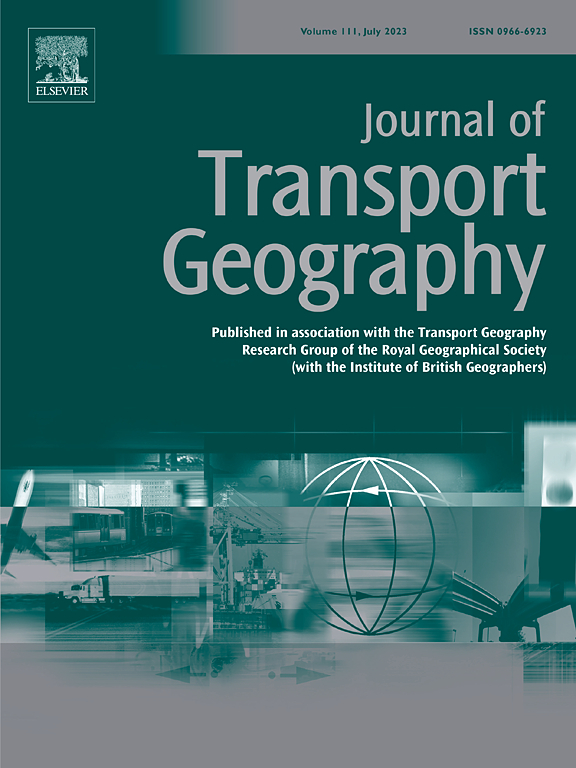交通出行时间结构特征对地铁客流量影响的时空异质性研究——以上海为例
IF 6.3
2区 工程技术
Q1 ECONOMICS
引用次数: 0
摘要
确定地铁客流量的决定因素对于提高交通导向发展(TOD)的质量和最终实现城市可持续发展至关重要。以往的研究主要集中在探索TOD形成的影响因素,很少从时空角度研究TOD结构特征对地铁客流量的反向影响。基于多尺度地理加权回归(MGWR)模型和层次聚类分析,利用上海288个地铁站点区域的多源数据,探讨TOD结构特征对地铁客流量影响的时空异质性。基于节点、地点三个关键组成部分及其动态反馈对TOD结构特征进行量化,并结合人口学指标进行更全面的分析。研究结果表明,交通工具与地铁的客流量关系存在明显的时空异质性。具体来说,“节点”和“地点”指标在周边郊区的车站贡献最大,“反馈”指标在西部和东部走廊都更为重要,“人口”指标(如人口密度)在东北部最能影响客流量,而房价在西北部和东南部更重要。而在市中心,这种影响更为平衡。此外,餐饮服务和工作场所服务是地铁客流量的两个主要驱动因素,并在早晚高峰期间表现出持续的积极影响。此外,我们的研究挑战了土地利用多样性通常有利于地铁乘客的观点。最后,基于TOD结构特征的相对影响,确定了不同的TOD集群,为促进高质量的TOD发展提供了启示。本文章由计算机程序翻译,如有差异,请以英文原文为准。
Spatiotemporal heterogeneity exploration in the effects of TOD structural characteristics on metro ridership: Evidence from Shanghai
Identifying the determinants of metro ridership is essential for enhancing the quality of Transit-Oriented Development (TOD) and ultimately achieving sustainable urban development. While previous studies have predominantly focused on exploring the factors contributing to the formation of TOD, few have examined the reverse impact of TOD structural characteristics on metro ridership from a spatiotemporal perspective. The paper combines a Multiscale Geographically Weighted Regression (MGWR) model with hierarchical cluster analysis, utilizing multi-source data from 288 metro station areas in Shanghai, China, to explore the spatiotemporal heterogeneity in the effects of TOD structural characteristics on metro ridership. The TOD structural characteristic is quantified based on three key components, the node, place, and their dynamic feedback, demographic indicators are incorporated to provide a more comprehensive analysis. The results reveal considerable spatiotemporal heterogeneity in the TOD-metro ridership relationship. Specifically, the ‘node’ and ‘place’ indicators contribute most at stations in surrounding suburban areas, ‘feedback’ indicators are more significant in both western and eastern corridors, ‘demographic’ indicators such as population density shapes ridership most in the northeast, while housing prices matter more in the northwest and southeast. While in the city center, the effects are more balanced. Furthermore, catering service and workplace service are two major drivers of metro ridership, and showing consistently positive impacts during morning and evening peaks. Besides, our study challenges the view that land use diversity generally benefits metro ridership. Finally, distinct TOD clusters are identified based on the relative impact of TOD structural characteristics with implications for fostering high-quality TOD development.
求助全文
通过发布文献求助,成功后即可免费获取论文全文。
去求助
来源期刊

Journal of Transport Geography
Multiple-
CiteScore
11.50
自引率
11.50%
发文量
197
期刊介绍:
A major resurgence has occurred in transport geography in the wake of political and policy changes, huge transport infrastructure projects and responses to urban traffic congestion. The Journal of Transport Geography provides a central focus for developments in this rapidly expanding sub-discipline.
 求助内容:
求助内容: 应助结果提醒方式:
应助结果提醒方式:


